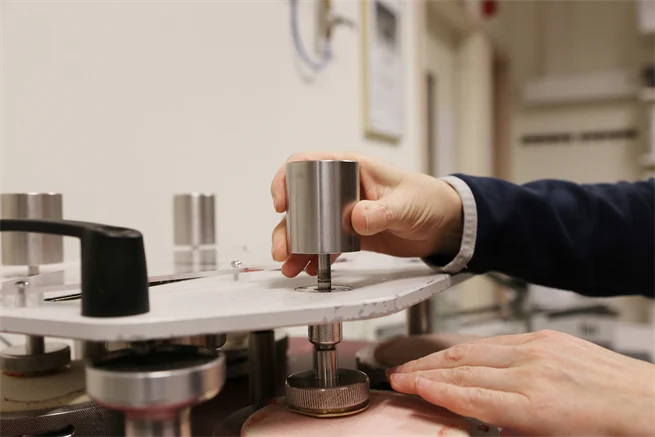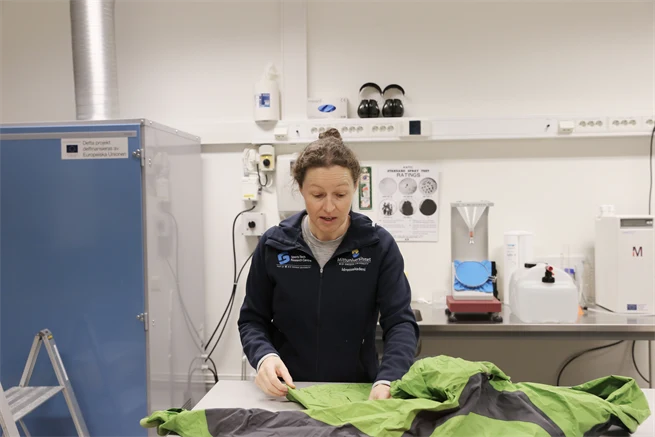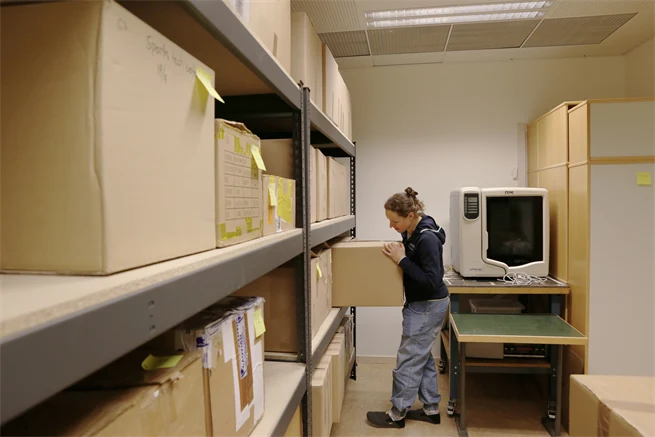Hundreds of shell jackets tested in unique sustainability study
For a few months now, a research project has been underway at the Sports Tech Research Centre that aims to investigate how much functionality is left in used shell jackets. Over 300 jackets will be tested and analyzed.
"We want to try to find out the reason why shell jackets are no longer used," says Judith Waller, researcher and project manager for the sustainability study.
The Sports Tech Research Centre has been working with a sustainability focus in research for a long time. For a few years now, several of the centre's researchers have also participated in Mistra Sport & Outdoors – a research and collaboration programme to create knowledge and solutions for increased sustainability in sport and outdoor life.
"At the Sports Tech Research Centre, our activities in environmental improvement have been a focus, mainly in connection with outdoor companies, for 15 years, but we have not called it sustainability even though the issues are similar. It's more about environmentally friendly material choices, surface coating chemistry and product life," says Mikael Bäckström, centre director at the Sports Tech Research Centre.
The Swedish language is relatively limited when it comes to describing sustainability. In our project, we focus on what is called "durability" and in our case it is about increasing the life of a garment," says Judith Waller.
"We have noticed that when a jacket is no longer used, there is still functionality left in it," she continues.

Martindale is a test that can be carried out in the material testing lab at the Sports Tech Research Centre.
At the research centre, studies are already underway on increasing the lifespan of shell jackets, where doctoral student Louisa Nilsson has investigated the experience of how the functionality of a second-hand garment compares to reality.
"In this project, we instead want to go into the depth of the physical garment and investigate why shell jackets lose their functionality. We want to develop a protocol that can be applied to all types of jackets where we look at the actual reasons why jackets are perceived as worn out by the user.
"It's simply a matter of developing a method to measure "durabiltiy" that makes everyone in the industry talk about the same thing. This, in turn, can lead to the development of products with reduced environmental impact in the future. The method we want to develop will be clarified in a way that makes it easier to choose a sustainable garment. Perhaps similar to a dishwasher's energy label," says Judith Waller.
Over 300 jackets in the lab

Judith Waller in the material testing lab.
The project investigates different types of jackets, partly used garments from ordinary consumers and partly different types of work clothes, for example from emergency personnel. At present, around forty companies and organizations from almost all continents have registered their interest and over 300 jackets have poured in to the lab.
"Collecting jackets from different places is, as far as we know, quite new. In the past, different companies have conducted their own studies, often with the help of artificial aging.
"We have received more jackets than we initially thought and it is clear that there is a great interest in this area and that it is a global project," says Judith Waller.
Intensive detective work in the "closet"

The "wardrobe" with shelves of cardboard boxes that house all the project's shell jackets.
"Right now, we spend a lot of time in the lab. We have hired a project assistant to help with the initial inspection. The storage that we have for the project is being referred to as the "closet" because we have such amounts of garments to go through.
By examining all jackets visually, a protocol will be developed that will be used for the next phase of the testing of the garments. Judith Waller has a continuous dialogue with the companies and organizations that have submitted shell jackets to the project.
"It is important to us that what we do is beneficial to companies. For us, of course, the scientific aspect is central, but it must also be worth something to the companies and those involved in the project. It is therefore important to have a dialogue between us and the companies where the goal is to get feedback on the test protocols, so that they actually work.
"We want to communicate to companies what we have seen in our study, which hopefully can lead to better products that in turn can contribute to a more sustainable society," she concludes.
The study is funded within the framework of the project H3 – Multidimensional Sustainability , which is carried out with support from the European Regional Development Fund/Swedish Agency for Economic and Regional Growth, Mid Sweden University, the Rolf and Gunilla Enström Foundation and Östersund Municipality.
Contact

